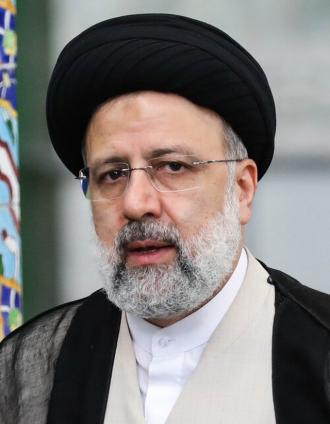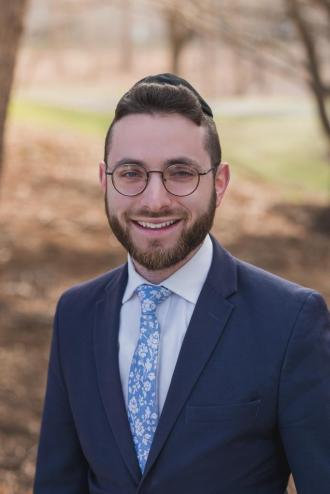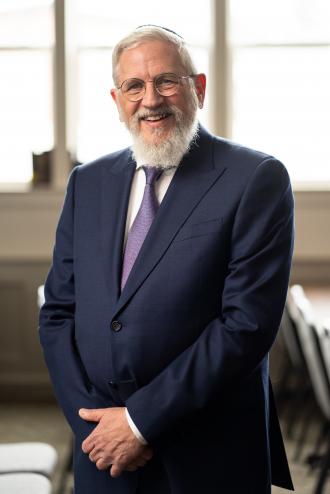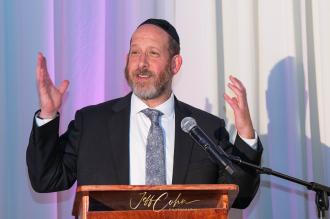Jewish history shines its light on many a woman of valor and their great sacrifices to assure the survival of the Jewish home. As we recognize that one of the greatest challenges to the Jewish home and nation was the Shoah, with all its ramifications, one must be, as I am, humbled by all the mothers (and fathers) who, in pursuit of the American Dream, deemed it their responsibility as first generation Americans to rebuild. They imbued their children,with that mission as well. Many of these women, who did not know aleph-beis themselves, were nevertheless determined to learn along with their children.
It is my privilege to pay homage to my mother-in-law, Dena Lerner Gerber a'h – who was zocha to live as matriarch to 4 generations of “batei neemanim b'Yisroel”.
Rosh Hoshanah 1939
Rabbi Samuel Pliskin stood at the bima with trepidation, delivering his first Rosh Hashanah message to his Baltimore congregation. The world was on the verge of World War ll. The fate of European Jewry was darkening, and Palestine was paralyzed by Britain's "White Paper." The rabbi bewailed, "A thick black question mark surrounds the planet Earth and its inhabitants!" He called for an awakening at the sound of the shofar and prayed these words: "May the Lord scatter the dark clouds and may He in all His mercy cause the sun to shine upon His world. May He purify the hearts of all people and the conscience of their rulers, in order that they may rebuild what has been destroyed and make the mourners rejoice again."
Powerful words. Rebuild and rejoice. Rebuild Jewish life in America, the “goldena medina”, upon which shores Jews often, forsook the ‘old fashioned’ practices? How implausible that there could be any future here for the Torah observant. Many, including yeshiva educated rabbis, believed that the only forum for Jewish survival was Non- Orthodox, ‘modified’ practices.
Such was the anguished state of the Jewish world during Dena’s youth. Dena Lerner Gerber, my mother in-law, passed away in March, 2019 at the age of 92. Looking at family photos of brissim, bar and bas mitzvahs, weddings, and holiday gatherings, my mind boggles with many images washing over me. At these ‘life events’ Dena never sought to be the ‘center’ of attention, yet, she always was. In wonder and disbelief, I ponder her spiritual journey. She was one of many (although to our family she was certainly one of a kind) whose life’s trajectory answered the calling of Rabbi Pliskin’s prayer, in creating an incredible, Torah-observant family. This is but a morsel of her incredible journey.
Dena’s parents, congregants of Rabbi Pliskin, heard the shofar’s cry that fateful Rosh Hoshanah. Her paternal grandfather, Rav Yitzchok Tzvi Hirsch Ingber, for whom my husband is named, was the rav and shochet of a small shtetl in the Ukraine. His wife died young leaving him six children. In 1912, in the throes of endless pogroms, he sent his two unmarried children, Dena’s father, 14 year old Yehuda Leib (Leon), and his sister, twelve year old Ita (Ida), to America. It was a heart-wrenching decision, like Fiddler’s Tevye leaving his dear Anetevka for ‘Chicago, America’. And, as in the story ‘Green Book’, as Yehuda and Ita made the week-long overland journey to Bremen, they met landsmen along the way who shared information as to where to stay safely overnight. These two children, with only enough money for passage, boarded the ship in Bremen to America. To where in America? They had no idea.
After a 2 week voyage, they disembarked at Locust Point, Baltimore. All immigrants had to prove that they would not be a financial burden on the country. These children had no family, no marketable skills, and only spoke Yiddish. What could they offer? To their great relief, community members frequented the docks to seek out newcomers and guarantee then jobs. A kind Mr. Lerner offered to be Yehuda’s and Ita’s sponsor.
After facilitating their entry, Mr. Lerner offered them an orange and a banana. Leon and his sister had never seen these foods before. The orange resembled an esrog and, thinking that it might be worth a lot of money they were reluctant to eat it. Mr. Lerner convinced them otherwise and he recited “Borei porei ha’aitz and the Shechechianu “to remove the ‘suffake/ doubt, as to whether they should say shechechianu for their safe arrival in America. Not realizing how plentiful this fruit was, Leon took his pocket knife and cut only slivers of each fruit which they then savored, one small piece at a time.
Mr. Lerner arranged for Ida to apprentice as a seamstress and for Leon to work at a fruit market. On their first night in America, he took them to a sparsely furnished room, which compared to steerage on the ship, luxurious! The next morning, their benefactor gave them clothing and a few coins and accompanied them to their respective jobs. When Leon arrived at the fruit market one can only imagine his shock at seeing hundreds of oranges!!!!!

Leon worked hard and graduated night school. In 1917 he met and married Pauline Vinnick, a Baltimore-born and bred Yankee. Since arriving in America, Leon aspired to become a pharmacist. When it became apparent that he had neither the time nor money to fulfill his dream, he and Pauline pooled their financial resources and opened a poultry store, carving out a niche by sourcing chickens from farms in Baltimore County. Pauline’s English was perfect and she was a terrific sales person. When asked, “Which chicken is the tenderest?” she distinguished between a roasting chicken and a soup chicken. The basic sell was for a live chicken, feathers and all. For a bit more money you could have it ‘schechted’, cleaned and de-feathered. Most people cleaned their own chickens but a few homemakers could afford the extra service. The Imbers then saved the chickens’ feathers and sold them to upholsterers and pillow makers.
Dena, the second of 4 children, was born October 24, 1926 during the time her family lived on a small farm in Baltimore County. During the Depression, Dena’s father worked in Lakewood, NJ, on a cousin’s egg farm, visiting his family only once every few weeks. These hard times passed and they acquired a grocery store in West Baltimore, and lived in the apartment above it. Their youngest child, a son, was born in 1932. Dena recalled that the family doctor arrived, carrying a back bag, and went to the back of the store to deliver the baby. For quite awhile afterwards Dena thought that the baby came in that black bag!
After high school and secretarial training, Dena worked for Baltimore City until a few years after her marriage to Joseph Lerner. Joe had graduated from City College (high school), a year later than his classmates as he quit school to help his parents during the Depression. He was very athletic and was a high school and Baltimore Singles Tennis Champion. Joe worked at Grand Rapids Furniture after high school and, in time, was promoted to sales manager. In December 1941, he volunteered to fight in WW! After basic training he was sent to Panama for 15 months. He was back in the states for a few months in 1943, when he met Dena at a USO dance in Baltimore. They hit it off immediately. His next deployment was Sheffield, England, (during which time he was the welterweight champion in the 4th Armed Division.) and from Sheffield he was sent to Normandy. As he was thankfully spared in that horrific battle, he returned home in December 1945 and made Dena his bride.
Dena’s father gave Joe an empty store and encouraged him to start his own business. Their store, Little Joe’s, sold clothing and shoes for men and boys. Dena left her government job to help both her father and her husband in their respective stores. Joe closed Little Joe’s a few years later to open a confectionary store.
How interesting it is, if not remarkable, that growing up Dena had only snippets of “Jewish” experiences, that, though sparse, likely paved the way for her later Jewish journey. Aside from attending synagogue only on the High Holy days Dena recalled that each year her maternal grandparents built a succah on the front roof of their store, off their apartment. To enter the succah one had to climb out a second story window on top of the store. Dena also recalled baking challahs with her Aunt Ida before Shabbos and yom tov. The sweet smell of brioche challahs and her fascination with watching her aunt salt and soak meat, a salt box installed above the sink, were fond memories, with no connection to her own home life. Dena cherished as well, her friendship with a shomer Shabbos high school classmate, Ruth Salinger. Though Dena’s parents worked most Friday nights, she was often with Ruth’s family. With them she experienced, close up, the beauty and sanctity of Shabbos.
The novelty of her grandparents’ succah, her aunt’s kitchen and the sweetness of Shabbos, drew Dena to her husband’s sister, Esther Friedman, and Esther’s more traditional husband, Marion (Menachem Mendel). Marion, a medical doctor, was raised in a strictly kosher ‘yiddish- speaking home’ where ‘unnecessary’ work on Shabbos was avoided. By American early 20th century standards, Marion’s parents were considered ‘frum’. At the insistence of his observant parents, Marion continued his cheder education beyond his bar mitzvah years, which reinforced in him an appreciation for tradition. When Marion and Esther moved “all the way out” to Forest Park, they were among a small group of families who sought to form an Orthodox shul with a modern approach. At the recommendation of Yeshivat Ner Israel, they hired Rabbi Jacob Max, z’l, a university-educated, English speaking American rabbi. Rabbi Max then became the rabbi of Liberty Jewish Center (LJC). Aunt Esther’s LJC Sisterhood leadership was legendary. As president, she recruited many women to participate in various shul activities. Her sweet demeanor and devoted work inspired many families to join LJC and to send their children to the synagogue’s Hebrew school.
Around the time of the Friedmans’ move to Forest Park my in-laws moved to Seven Mile Lane, a welcome change with its country-like feel. After a couple more years, Dena enrolled my husband in first grade at Beth Tifiloh day school. She valued the opportunity for him to be with other Jewish children. Her sister in law Esther, was successful in persuading Dena to attend Rabbi Max’s weekly ‘book review’ even though Dena was working fulltime in the confectionary store. This exposure then led her to attend a “Bible class,” however, she was frustrated that she had no formal (or informal) Jewish education and was desperate to read and understand Hebrew, especially as now her son was in a Jewish school also learning to read hebrew. Rabbi Max suggested that she study at Baltimore Hebrew College, housed in their brand new building on Park Heights Avenue at Baltimore Hebrew College, Dena took not only Hebrew classes but also a wide variety of courses taught by legendary brilliant scholars. Her teachers included Dr. Ivri, Dr. Louis Kaplan and Rabbi Dr Joseph Baumgarten, a master teacher and talmid chochom. (Rabbi Baumgarten was the father in law of Rabbi Moshe Hauer, who was recently appointed the executive Vice-President of the Orthodox Union).
A few years later, Dena embarked more seriously on her ‘Jewish journey’ and insisted her family move within walking distance to LJC as Rabbi Max had become the Lerners’ “Rabbi.” They sold their home and moved into a tiny semi -detached house, close to Rabbi Max’s house and a 12 minute walk to LJC. Extremely effective in my mother-in-law‘s growth in Judaism was her attending classes at LJC and her subsequent decision to enroll her son in the Talmudical Academy. My husband often mentions that many of his pastoral skills were modeled on those of Rabbi Max. From the time of their move to Cadillac Ave, they attended shul each Shabbos, and would accompany Rabbi Max home. One Shabbos morning, after services, Rabbi Max insisted that they join his family for lunch. That is when they met Rabbi Max’s mother, “Bubby Max”. After a few meals they became Friday night regulars, enjoying many Shabbos meals at the home of Bubby Max. As they grew closer to her - they also grew closer to traditional Jewish observance. Bubby Max, in her old country broken English, (Yinglish?) embraced kiruv, before it became ‘fashionable’. After my husband started attending TA, she became a real bubby to him and a mentor to my mother in law. My father in-law also enjoyed the relationship, slipping in unobtrusively Friday night, after work, to join everyone for Shabbos dinner. He had many a lively conversation with Bubby Max in Yiddish. Although my father in law was not shomer Shabbos he was warmly welcomed by Bubby Max who always kept his meal for him no matter how ‘late’ he joined them. She was the quintessential woman of valor, non-judgmental and graciously welcomed everyone into her home regardless of their religious affiliation or level of observance.
Dena began keeping kosher, observing Shabbos, attending shul regularly, and over the ensuing years regularly partook of many learning opportunities. As her quest and thirst for learning were satiated, her appetite for more knowledge was whetted. By 2002 Dena started regular attendance at classes offered by WIT (Women’s Institute of Torah).
Little could she envision what spiritual wealth she would gain and what favor she would find in the eyes and hearts of WIT’s organizers, directors and fellow students. In 2013 , now a mother to a distinguished rabbi, grandmother and great grandmother to bnos and bnei Torah , she was honored as Student of the Year at a lavish WIT Melalva Malka, attended proudly, by not only her son and daughter in law, but also by many of her extended Baltimore family. The biggest tribute that night was that the guest speaker was her own dear rabbi, Rabbi Shmuel Silber, Rav of Baltimore’s Suburban Orthodox Congregation. He shared how he was inspired by Dena, and he, in turn, inspired the attendees with his erudite and uplifting words.
In the prophetic words of Rabbi Pliskin, spoken in those dark days of Rosh Hoshanah 1939 ….. “an awakening at the sound of the shofar …………….. in order that they may rebuild what has been destroyed and make the mourners rejoice again."
Today we can indeed rejoice in what my mother in law and her generation rebuilt.
At the time of her passing in March, 2019 she left behind 1 son, 5 grandchildren, 43 great grandchildren and 14 great-great grandchildren. An everlasting legacy of a growing mishpacha. This still growing mishpacha of 68 bih shomrei mitzvos souls is a reflection of her pure heart, focus, determination and commitment - t’hee zichrona baruch.
Arleeta Lerner is an educator in the Greater Washington community and is presently writing a book about her mother in law.














